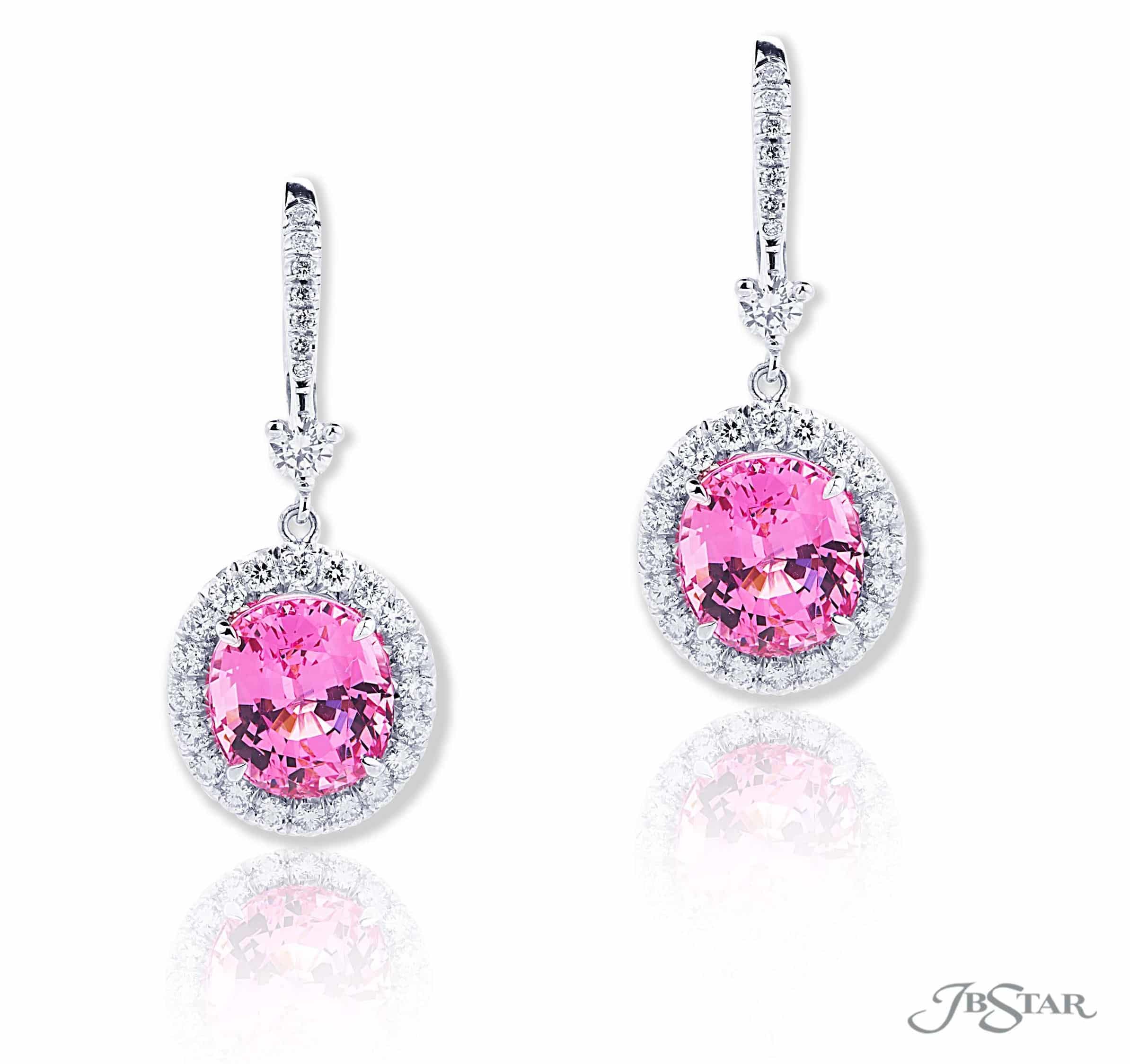By Isabelle Corvin, CG, Staff Gemologist at Panowicz Jewelers

Spinel is an oxide mineral that crystallizes in the cubic structure and has quite the mixed-up history.
As of 2016, it is also the newest birthstone to be added to the birthstone list! August babies now have a choice between vivid peridot and alluring spinel.
The word “spinel” comes from the Latin word Spinella, which means “little thorn” or “arrow-shaped.” Spinel gems come in a wide range of colors and saturations, though perhaps the most famous (and mistakenly infamous) is the red variety.
In ancient cultures, red spinel was always grouped together with rubies, and sometimes garnets, since the rough (and even polished and cut) crystals look so similar. In the modern age, the gems can be separated, but much of spinel’s history is tied up in the lore of rubies.
Red spinel ring, by Omi Privé.

The oldest known spinel dates back to 100 B.C. and was found in Kabul, Afghanistan, inside a Buddhist temple. Red and blue spinels were also being used in crafting by the Romans.
The most famous spinel is also the most famous example of mistaken identity in all of gemological history. A “ruby” known as the Black Prince’s Ruby is our culprit. It is a red gem set in the Imperial State Crown of the British crown jewels. The gemstone is uncut, but polished, and weighs approximately 170 carats. The gem has never been removed from its original setting, so the weight is only estimated.
This amazing gemstone, however, is no ruby. It is, in fact, a spinel.
The Imperial State Crown. Image courtesy of GIA.

The Black Prince was the son of Edward III, and reportedly received the gem from Don Pedro the Cruel, King of Castille as a reward. Legend has it that the spinel was one of the gems worn by Henry V on his helmet and that it deflected a fatal blow, saving his life during the Battle of Agincourt.
Whether true or not, the gem was thought to be ruby for many years, until technology and the knowledge of gems improved enough to separate gems on more than mere color.
This royal stone is not the only spinel in disguise. Empress Catherine II of Russia had a crown that bore an estimated 400-carat spinel. Likewise, Queen Victoria had a very dark red spinel called the Timur Ruby.
It doesn’t help matters when spinel and ruby often form together in the earth! In 1783, mineralogist Jean Baptiste Louis Rome de Lisle finally separated spinel from ruby, realizing that the two minerals were completely different.
Further confusion arises with spinel’s true nature even now.
Many pieces of inexpensive birthstone jewelry have an imitation of the true birthstone: something that looks like—but isn’t—the real thing. The majority of these are made with synthetic spinel, grown in a laboratory rather than the ground, but boasting the same chemical make-up.
The natural gem is lovely, but many only know of its synthetic counterparts.
Each color of spinel is thought to provide different benefits to the wearer, from protection to enhancing creativity and kindness, to better cognitive abilities. Colorless spinel is rare, and no current mines exist that produce it.
Spinel earrings set in 18k rose gold, by AG Gems.

The most common colors seen in jewelry are red and blue, with the hues ranging from highly saturated to perfectly pastel.
Other popular colors are yellows, purples, and pinks, although the gem comes in every color. Black spinel is found in many pieces, and once again, is often confused for other black gems like hematite, black diamond, and black onyx.
Black spinel and white sapphire pendant, by Dilamani.

Spinel is mined in many locations, including Madagascar, Sri Lanka, Myanmar (formerly Bruma) Brazil, Sweden, Pakistan, and Russia, among others. It can even be found in the USA.
Additionally, small crystals have been found on meteorites, a trait spinel shares with the other August birthstone, peridot.
For a gemstone many have never heard of, it might be the most famous of all. It is the hidden star of the show, silently shining on as the world ignores it or mistakes it for another stone altogether.
Pink spinel and diamond drop earrings, by JB Star.

But spinel is worth a first, and second, glance. With spectacular colors, excellent durability and an amusing history, it’s the perfect addition to anyone’s gem and jewelry collection.
Spinel truly deserves the title: The Coolest Gem You’ve (Probably) Never Heard Of!

Isabelle Corvin is an AGS Certified Gemologist (CG) who is the Staff Gemologist at Panowicz Jewelers. Since she was 14-years-old, she knew she wanted to be a gemologist. Ms. Corvin also writes for Panowicz Jewelers’ blog.